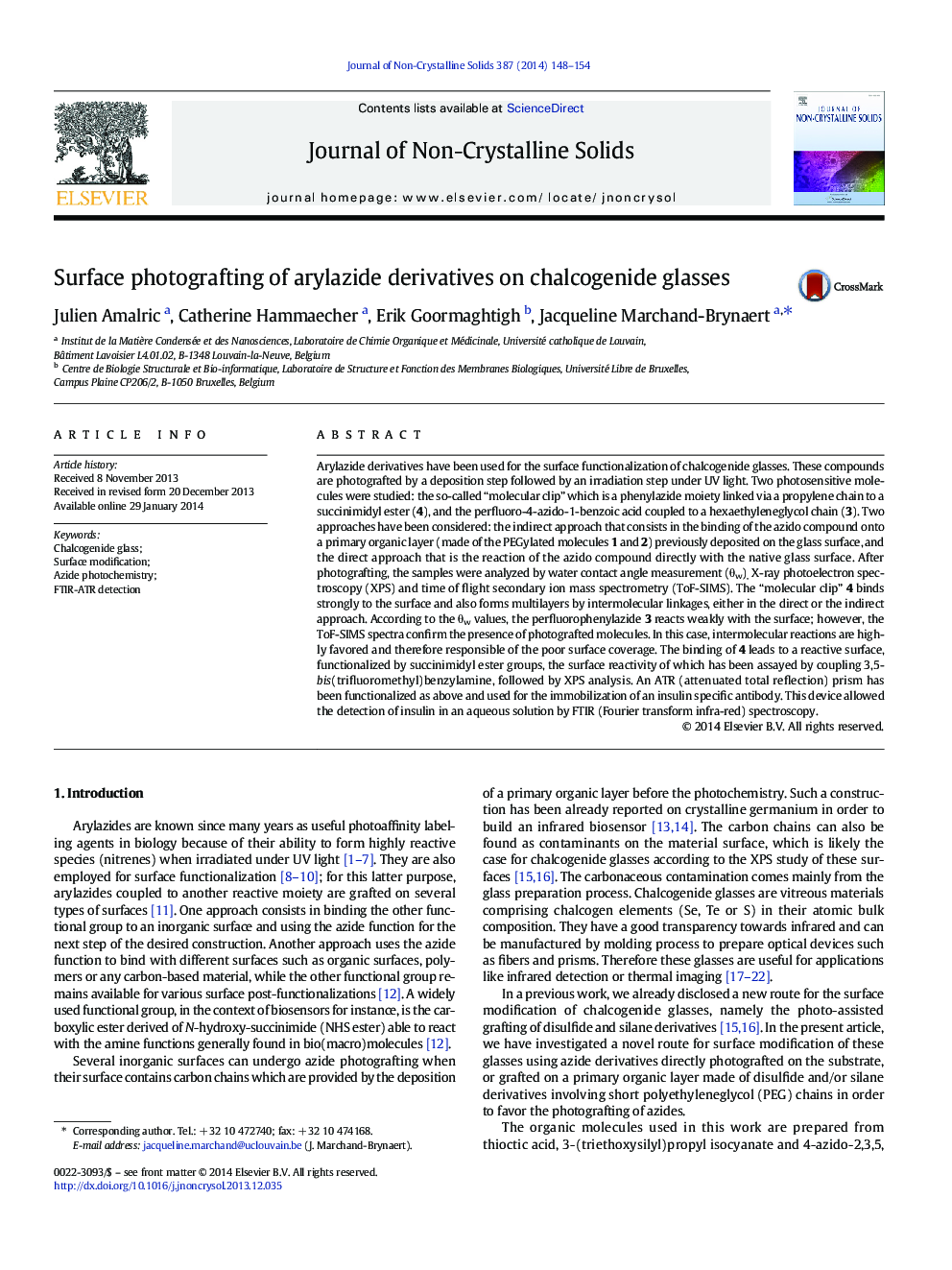| کد مقاله | کد نشریه | سال انتشار | مقاله انگلیسی | نسخه تمام متن |
|---|---|---|---|---|
| 7902505 | 1510451 | 2014 | 7 صفحه PDF | دانلود رایگان |
عنوان انگلیسی مقاله ISI
Surface photografting of arylazide derivatives on chalcogenide glasses
ترجمه فارسی عنوان
عکاسی سطحی از مشتقات آریلازید در عینک های کلسکوئیدی
دانلود مقاله + سفارش ترجمه
دانلود مقاله ISI انگلیسی
رایگان برای ایرانیان
موضوعات مرتبط
مهندسی و علوم پایه
مهندسی مواد
سرامیک و کامپوزیت
چکیده انگلیسی
Arylazide derivatives have been used for the surface functionalization of chalcogenide glasses. These compounds are photografted by a deposition step followed by an irradiation step under UV light. Two photosensitive molecules were studied: the so-called “molecular clip” which is a phenylazide moiety linked via a propylene chain to a succinimidyl ester (4), and the perfluoro-4-azido-1-benzoic acid coupled to a hexaethyleneglycol chain (3). Two approaches have been considered: the indirect approach that consists in the binding of the azido compound onto a primary organic layer (made of the PEGylated molecules 1 and 2) previously deposited on the glass surface, and the direct approach that is the reaction of the azido compound directly with the native glass surface. After photografting, the samples were analyzed by water contact angle measurement (θw), X-ray photoelectron spectroscopy (XPS) and time of flight secondary ion mass spectrometry (ToF-SIMS). The “molecular clip” 4 binds strongly to the surface and also forms multilayers by intermolecular linkages, either in the direct or the indirect approach. According to the θw values, the perfluorophenylazide 3 reacts weakly with the surface; however, the ToF-SIMS spectra confirm the presence of photografted molecules. In this case, intermolecular reactions are highly favored and therefore responsible of the poor surface coverage. The binding of 4 leads to a reactive surface, functionalized by succinimidyl ester groups, the surface reactivity of which has been assayed by coupling 3,5-bis(trifluoromethyl)benzylamine, followed by XPS analysis. An ATR (attenuated total reflection) prism has been functionalized as above and used for the immobilization of an insulin specific antibody. This device allowed the detection of insulin in an aqueous solution by FTIR (Fourier transform infra-red) spectroscopy.
ناشر
Database: Elsevier - ScienceDirect (ساینس دایرکت)
Journal: Journal of Non-Crystalline Solids - Volume 387, 1 March 2014, Pages 148-154
Journal: Journal of Non-Crystalline Solids - Volume 387, 1 March 2014, Pages 148-154
نویسندگان
Julien Amalric, Catherine Hammaecher, Erik Goormaghtigh, Jacqueline Marchand-Brynaert,
